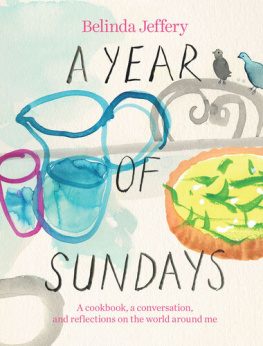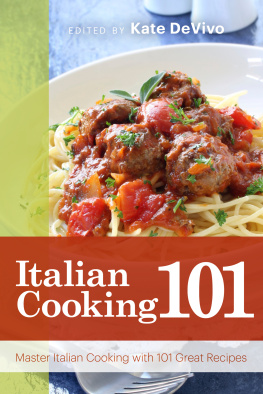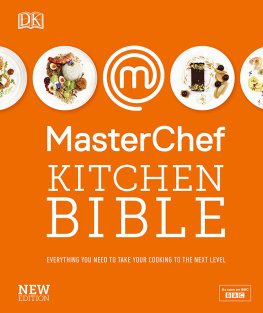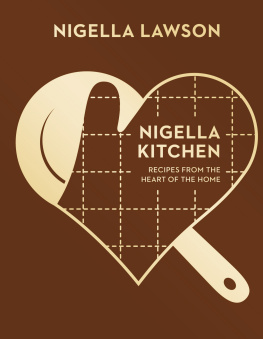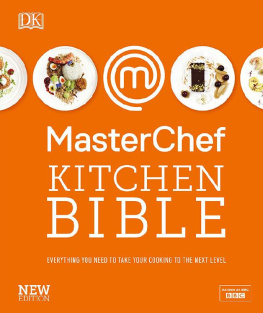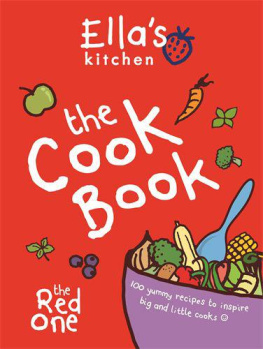Too few of us were taught how to cook and, as a result, theres now a lost generation of cooks. Basic kitchen skills that were once commonplace have been replaced by frozen conveniences and take-out orders, making the act of cooking and the kitchen daunting. This book aims to change that.
Consider this a guide to conquering your kitchen written by someone whose full-time job is to answer how and why. Its filled with answers to the questions Im most frequently asked, as well as those you may have not yet thought to ask.
When it comes to food, Ive learned it tastes better when its prepared by hand and made with whole ingredients, which is why Im so insistent that everyone should know their way around the kitchen. The amazing thing about cooking is that while it is extremely artistic and creative, it can also be explained through science and inquiry. This mixture of art and science is what first drew me to the kitchen and I immediately felt I had met my destiny. For over a decade now Ive been cooking, the last few years of which have been spent as a modern-day home economist, minus the kitschy apron and the beehive.
I work in a food laboratory. Not the kind that comes up with numbered dyes or unpronounceable ingredients, but the kind that develops reliable recipes. That began when I worked at CHOW, where I ran a test kitchen and food team. On a daily basis, we determined the proper timing, measurements, and ingredients required to produce the best possible result. In the process Ive tested and tasted my way through thousands of recipes.
Since then, Ive been working tirelessly online, on television, and now in book form to share my experiences and discoveries with you. All this with the aim of encouraging people to get their hands dirty in the kitchen and learn a bit about what were eating and where it comes from.
The recipes in this book are modern and memorable yet approachable and reliable. Theyre based on a solid technique that, once mastered, is like a good jazz song, begging to be riffed upon. As you build your cooking confidence, I encourage you to underline, dog-ear, splatter, or otherwise use these pages, as thats what this book is intended to be: a tireless resource.
Theres a Chinese proverb that states Give a man a fish, and you feed him for a day. Teach a man to fish, and you feed him for a lifetime. Thats what this book isa self-help resource for the kitchen. While most cookbooks are a silo of recipes, this book is a holistic resource, covering everything you need to know to conquer your kitchen. That said, before you even get to the recipes, there is a wealth of info from tips on how to shop to how to store food and what to buy.
Now that you know what to expect from this book, Im going to tell you what I need from you: I need you to care.
First, have fun and be ready for some adventures. Allow the fundamental kitchen knowledge to stick with you, and it will, in turn, free your creativity.
Second, dont be lazy. Not to say that you are, but its up to you to get engaged and foster curiosity about food.
Before you start cooking, do yourself a favor: read the pointers to make sure your kitchens doing more for you than you for it. Then really get to know this book, as it will prepare you for cooking success. Once you get the basics down you can cook up a storm and, before you know it, youll be successfully pulling off dinner parties and date nights. Whether youve never stepped foot in your kitchen or you practically sleep there, this book will become an essential reference because its chockful of all sorts of cooking wisdom.
This isnt about becoming pretentious about food, but rather the opposite. The minute you take the time to learn these basics, youll waste less food, youll get more for every food dollar you spend, and youll become a healthier, more accomplished, and more adventurous cook.

Not to get too analytical, but I showed you that formula because its the basis for this book. Specifically, this book is broken down as follows:
PART 1 THE SET-UP
This section is about what to do at the store, before you ever enter your kitchen; the focus is on quality ingredients. Youll learn where to shop, how to shop, and what to shop for, for both ingredients and equipment.
PART 2 THE HOW-TO
Just like it sounds, this section is all about honing your technique, but it extends beyond knife handling to cover everything from prepping through cooking. It covers the best tips and methods for storing food and equipment, the must-know cooking skills, and a review of the various cooking methods out there.
PART 3 THE RECIPES
Here they are. The recipes118 of them to be precisereflecting a variety of ingredients, cuisines, and techniques. Theyre various levels of difficulty but are all rooted in my West Coast style wherein fresh, seasonal ingredients are combined in a modern way.
PART 4 THE RIFF
This is where you go from following recipes to cooking from the hip. There are techniques to help you think outside the box when it comes to cooking and coming up with menus. To get your creativity cranking, there are over 100 additional cooking ideas including how to reinvent last nights leftovers.
Whether youre a curious beginner or intermediate cook, this book will help you conquer your kitchen. And then your cooking can become adventurous, creative, and fun.
Good cooking is based on a solid foundation. Thats usually in reference to technique, but it really should be broadened. You wouldnt drive a car without the keys, so you shouldnt cook without first having the keys to the kitchen. This is the vital info on how to shop, how to chop, and what to use, so youll be all set when you finally turn on the stove.
Buy good food and itll reward you with good flavoreven when youre still working on becoming a good cook yourself. Aside from the leisurely sunny afternoon where I get to personally choose every item, I absolutely hate shopping. But, after years of going to stores of all shapes and sizes multiple times a week, Ive got tips to make shopping more efficient and less painful.
The minute you buy food, youre voting with your food dollars, so, use that vote wisely and responsibly. Here are the lessons Ive adopted over the past few years in an effort to become a more conscientious cook.
Know Where Your Food Comes From
This may seem obvious: I mean, steak comes from cows, right? But do you know its backstory? Eating grass-fed beef isnt important just because it tastes better but also because its better for the animal. Remember, youre eating whatever an animal ate during its lifetime, so, ask questions, because if it ate junk, then you are, too.
Eat Lower on the Food Chain
The higher on the food chain you eat, the more calories required to make that food (i.e. it has a bigger carbon footprint), so by eating lower on the food chain, youre leaving less of a dent in things.
Make It a Meatless Monday
Its your choice to eat meat or not, but, if you do eat it, consider eating it less often. To help get you started, Ive put together a whole chapter of meatless recipessee .
Shop Responsibly
Youve heard the terms thrown around: local, seasonal, and sustainable. What they translate to is better-quality food for you, more support for your local economy, and less strain on the environment.


